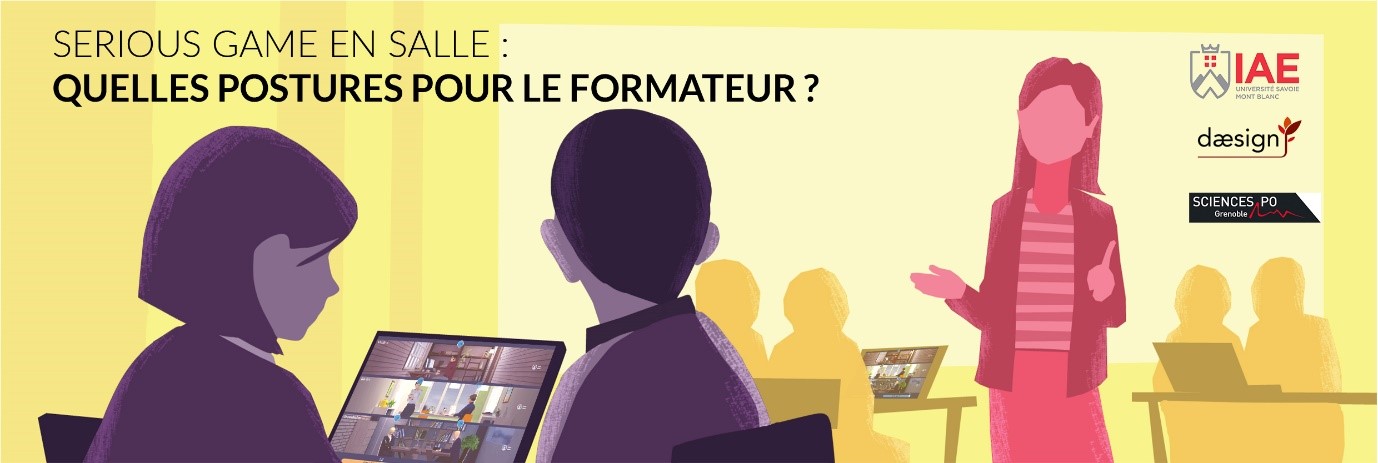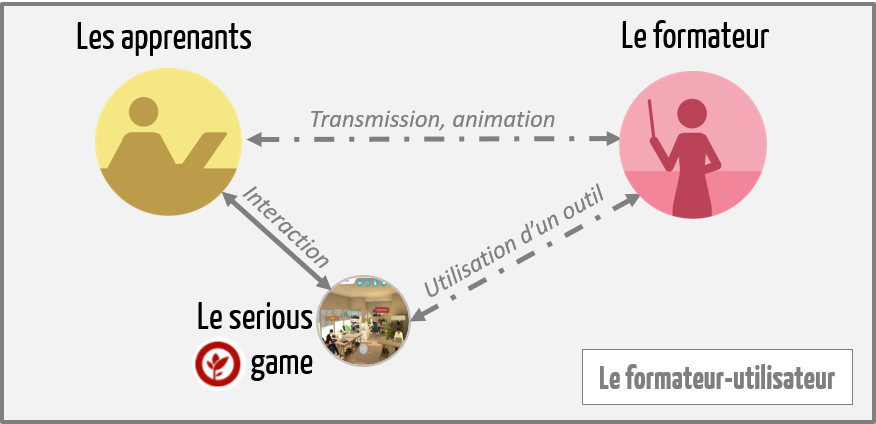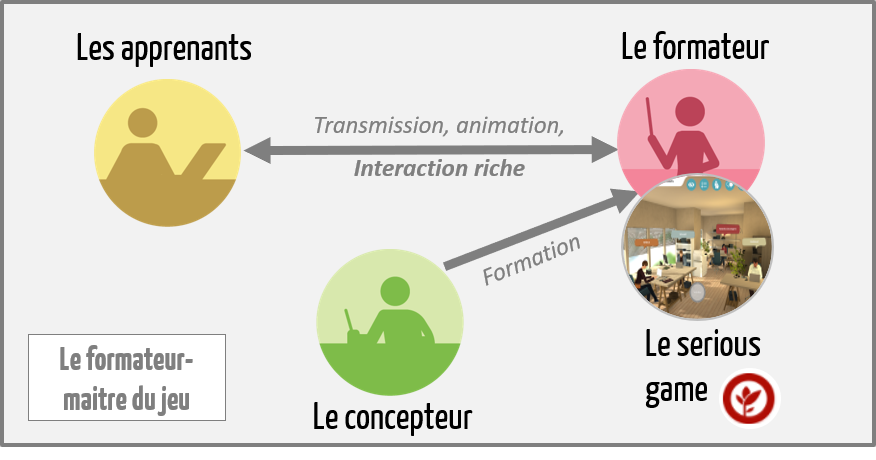From design to coordination
As a designer of serious games for more than 10 years, in particular managerial simulations and role-plays, I have approached many training projects from the perspective of the customer’s need. This was most often expressed by their desire for a return on investment (ROI), and therefore measurable teaching effectiveness. How can this be obtained? For serious games, this effectiveness is gained through careful work on the game design, which should be closely intertwined with the scenario, and the goals and the teaching content. This means we promote involvement and consistent focus, and better anchor the knowledge and skills acquired over time.
I now devote some of my time to teaching: I work with second-year master’s students specialising in Strategy and Digital Communications (Université Savoie Mont-Blanc) and first-year master’s students in Transmedia (Sciences Po Grenoble), on the themes of management and project management.
Naturally, I chose serious games as a method, and made them the backbone of my course. In collaboration with Daesign, a benchmark publisher in the field, I chose to base the teaching (fifteen hours per group) on 3 of the serious games in its catalogue:
- Time management
- Delegating a task/duty
- Managing remotely
The experience has been very positive: I have seen the effectiveness of the tool and the satisfaction learners gain from using it. But above all I have been able to measure the impact of using serious games in the classroom on the role of the trainer themselves. Lesson preparation, teaching methods and the stance adopted in the classroom have been transformed.
As a designer, my questions were: “will the interaction between the learner and the serious game go as I imagine and will it provide them with all the benefits that the product promises?”
As a trainer, this question became: “When I see the students getting involved, thinking out loud and challenging themselves… what stance should I adopt as a trainer in the lesson to take advantage of this energy?”
At the end of the experience, I identified three…
1. The trainer-designer
This is the very specific scenario – which can clearly not be generalised – that I found myself in in the first sessions. I used two serious games that I had actively helped to write, of which I knew the scenario, the gameplay, the interface and above all the model.
By ‘model’, I mean all the rules, principles, best practice and tools used as a reference, and the way in which the scenario connects them to determine the action sequences, the score calculation, the choice of feedback… everything that makes up the learner’s journey and progress.
Consequently, having created or co-created the models underlying the simulations and their staging myself, I was prepared to receive and even anticipate any comments or questions from the learners, and to respond with a constructed argument.
I therefore naturally made the use of serious games the core of the lesson. I made it the guiding theme and the main material. The students (12 in total) played in sub-groups or together. The session was systematically followed by group feedback. I addressed the points of the programme not traditionally covered by the games (theory and practical scenarios) in separate sequences.
In a few words:
- Once serious game sequences are launched, they always generate their own dynamic: the students get hooked and involved in their choices and interact with each other and the game.
- The teaching messages are passed on through the exchanges that are naturally established during the game sequences. It is then easy to explain and highlight them in the feedback which gives rise to many comments and debates.
The traditional lesson sequences are then seen as a break with the previous ones, and it is difficult to maintain the connection and fluidity.

 Contact
Contact Français
Français


